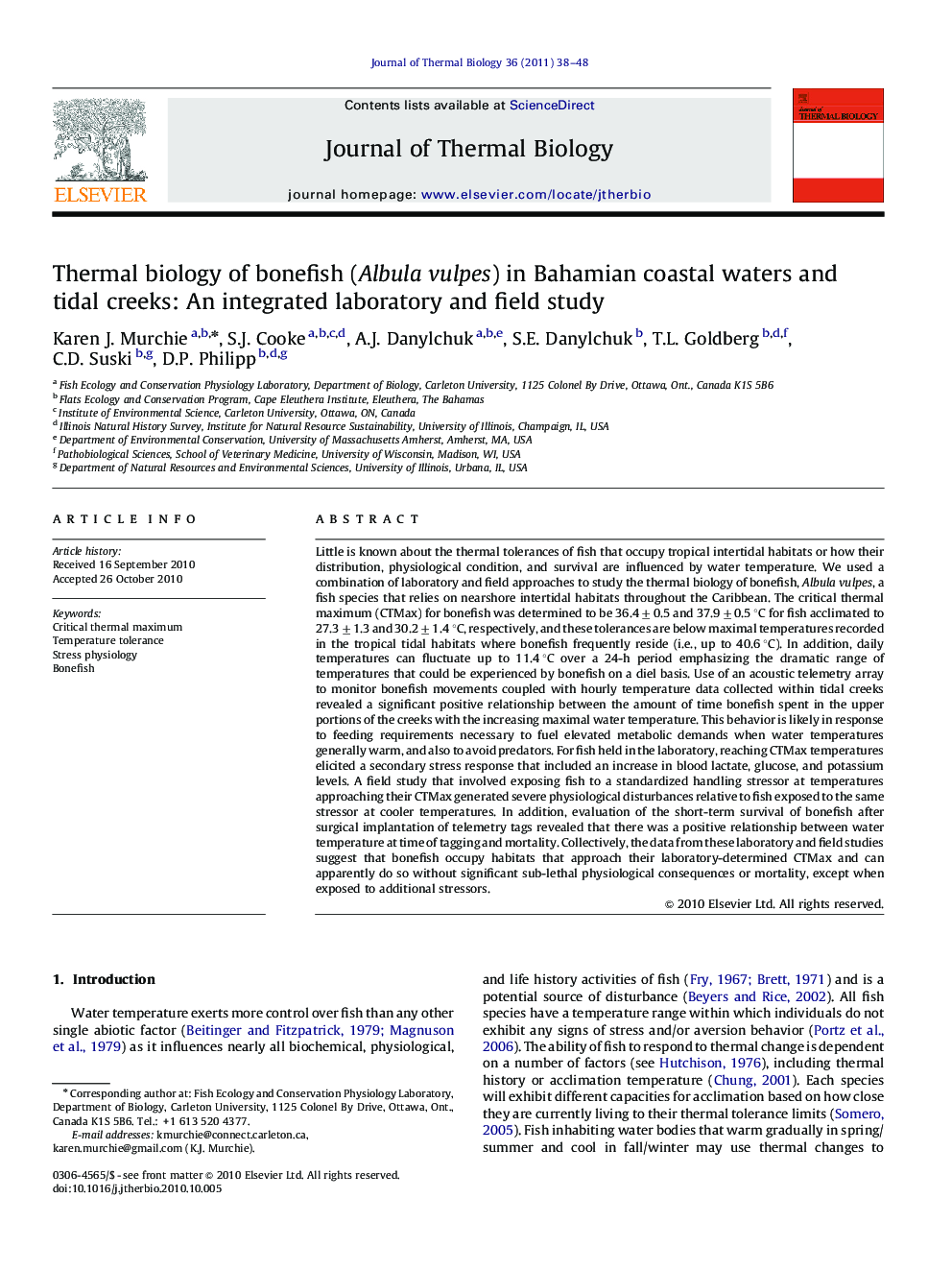| کد مقاله | کد نشریه | سال انتشار | مقاله انگلیسی | نسخه تمام متن |
|---|---|---|---|---|
| 2843249 | 1166082 | 2011 | 11 صفحه PDF | دانلود رایگان |

Little is known about the thermal tolerances of fish that occupy tropical intertidal habitats or how their distribution, physiological condition, and survival are influenced by water temperature. We used a combination of laboratory and field approaches to study the thermal biology of bonefish, Albula vulpes, a fish species that relies on nearshore intertidal habitats throughout the Caribbean. The critical thermal maximum (CTMax) for bonefish was determined to be 36.4±0.5 and 37.9±0.5 °C for fish acclimated to 27.3±1.3 and 30.2±1.4 °C, respectively, and these tolerances are below maximal temperatures recorded in the tropical tidal habitats where bonefish frequently reside (i.e., up to 40.6 °C). In addition, daily temperatures can fluctuate up to 11.4 °C over a 24-h period emphasizing the dramatic range of temperatures that could be experienced by bonefish on a diel basis. Use of an acoustic telemetry array to monitor bonefish movements coupled with hourly temperature data collected within tidal creeks revealed a significant positive relationship between the amount of time bonefish spent in the upper portions of the creeks with the increasing maximal water temperature. This behavior is likely in response to feeding requirements necessary to fuel elevated metabolic demands when water temperatures generally warm, and also to avoid predators. For fish held in the laboratory, reaching CTMax temperatures elicited a secondary stress response that included an increase in blood lactate, glucose, and potassium levels. A field study that involved exposing fish to a standardized handling stressor at temperatures approaching their CTMax generated severe physiological disturbances relative to fish exposed to the same stressor at cooler temperatures. In addition, evaluation of the short-term survival of bonefish after surgical implantation of telemetry tags revealed that there was a positive relationship between water temperature at time of tagging and mortality. Collectively, the data from these laboratory and field studies suggest that bonefish occupy habitats that approach their laboratory-determined CTMax and can apparently do so without significant sub-lethal physiological consequences or mortality, except when exposed to additional stressors.
Journal: Journal of Thermal Biology - Volume 36, Issue 1, January 2011, Pages 38–48